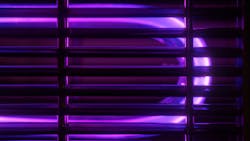UV technologies attract searchlights up to, during COVID-19 pandemic
During the nearly three-year COVID-19 pandemic, healthcare organizations scrambled to locate the silver bullet that would give them the upper hand to disinfect the air and surfaces from the highly contagious respiratory virus.
For many, that silver bullet appeared to be cloaked in ultraviolet radiation, and unfortunately, short of comprehensive and effective sourcing, a portion of what was emerging and available on the market seemed to generate questionable results.
Opportunistic marketing, coupled with unrealistic expectations and compounded by increasing caseloads as well as a powder keg of a working environment compressed an already over-burdened clinical and operational labor force suffering through budget restraints.
Until the onset of the COVID-19 pandemic in January 2020, ultraviolet (UV) technologies for water treatment, heating-ventilation-air-conditioning (HVAC) units and whole-room disinfection enjoyed steady growth since the mid-2000s.
Killing time
The first cases of COVID-19 may have caught healthcare providers initially by surprise that quickly morphed into shock as the virus expanded exponentially, depleting personal protective equipment (PPE) prematurely when compared to ordinary daily consumption patterns.
During the next few years, healthcare provider organizations concentrated on eliminating pathogens as a top priority with Infection Control, Willard observed. “The challenge continues to be a better understanding of how UV works and a faith in that photo-biological process since we cannot observe how much cleaner an item has become after exposure,” he added.
Over the course of the pandemic, more people were learning about UV technology, which enabled manufacturers to concentrate on the technology itself, according to Sam Guzman, global sales director—Healthcare Solutions, American Ultraviolet Co. “The research was a benefit because it meant we had to spend less time educating the clients on the UV basics and we could focus more time on the proper application and their equipment needs,” he indicated.
But the viral crisis created another emerging trend.
“UV technology—and manufacturers—for air and surface disinfection proliferated exponentially during the pandemic,” Steely noted. “It led to many unproven technologies seeking to opportunistically enter the market during a time of great need, yet lacking in independent evidence for efficacy, efficient use and safety. This can create significant confusion for healthcare professionals to assess and to determine which technologies are truly effective.”
Guzman credits two agencies for capable assistance. Groups such as the American Society of Heating Refrigeration and Air-conditioning Engineers (ASHRAE) and the International Ultraviolet Association (IUVA) stepped up as “unbiased resources” for the general public, he noted. Further, the interNational Association of Lighting Management Companies (Nalmco) started offering a three-tiered training program to certify installers, maintenance professionals and design engineers working on UV applications, which will help in further educating the public and will lead to more successful installations, he added.
“In the midst of the confusion, independent lab testing at real-world times and distances and peer-reviewed, published evidence is still the best, black-and-white proof for effectiveness,” Steely said.
Even though UV technology technically hasn’t changed in terms of efficacy, which is to deliver the right amount of radiation to the targeted areas of interest to inactivate the specified pathogen, the number of systems entering the marketplace has risen significantly, according to Steve Baiocchi, COO, Steriliz LLC.
To overcome this, Baiocchi encourages infection prevention and environmental services to work together to better understand system capabilities, such as total UVC output, dose measurement capabilities, efficacy, throughput and other specifications.
“The industry should really compare and contrast multiple UV systems for the best fit and cost,” he recommended. “Validation questions absolutely should be raised during the sourcing and evaluation process. For example, a number of ‘automated’ UV systems are entering the marketplace claiming the facilities do not need a full-time equivalent (FTE) to operate when compared to mobile UV systems—which is simply not the case. There are a number of issues with automated UV systems, including charging time, facility mobility to address outbreaks, system output limited to the battery, no-measurement capabilities etc.—that sourcing needs to be made aware of.”
Disinfection theater noise
“During the pandemic, new UV companies emerged and many of them made false claims which created a lot of market confusion—eight seconds to disinfect an entire room, UV wands, UV portals, etc.,” Miller noted. “There were companies selling UV technology on Amazon! We call that the ‘theater of disinfection,’ and it’s not good for patient safety or public health. We want higher standards for the UV industry.”
The number of new companies entering the market “causes noise for our customers,” echoed Brian Donahue, vice president, Sales & Operations, The Americas, Finsen Technologies.
To counter any skepticism and cynicism about market opportunists, James Clements, director of Channel Management, Product Marketing, Excelitas Technologies, reassured about the efficacy, safety and utility of UV technology.
Clements blames some of the initial concerns about UV technology as a COVID-19 eradicator on a fundamental lack of knowledge about the emerging virus and its respiratory transmission pathway.
“At the onset of the COVID-19 pandemic, the mechanism of coronavirus (SARS-CoV-2) disease transmission was not yet well understood, and UVC product development strategies focused heavily on surface disinfection through conventional pulsed xenon, and low-pressure mercury tools,” he said. “These tools are very effective for some pathogens in certain applications but had little effect on controlling the spread of this particular disease since the coronavirus transmission route is primarily through the inhalation of infectious particles (i.e., short range aerosol or airborne transmission). Once the mechanism of coronavirus infection was better understood, UVC global research and product development refocused on strategies that had been used earlier to combat another respiratory-transmitted disease—tuberculosis.
“Equipment providers developed products designed to inactivate pathogens in the air, producing truly effective tools to help control the spread of pathogens in occupied settings, and wherever individuals may be vulnerable to airborne infectious pathogens,” Clements continued.
Still, Clements acknowledges that end-user education, public acceptance and the need for industry standards will challenge greater adoption. “Adoption will improve when end users understand the mechanisms of UVC disinfection, trust the performance of UVC-generating devices, and feel they can rely upon the built-in safety features of newly developed products,” he asserted.
Clements pointed to ASHRAE publishing its Standard 241 in July as making a difference.
“Standard 241—'Control of Infectious Aerosols’—is a groundbreaking code-enforceable standard, designed to help mitigate the risk of airborne transmission of pathogens in buildings,” he indicated. “Within this Standard are requirements for equivalent clean airflow rates setting target requirements per occupant of pathogen-free air flow. In many cases, conventional HVAC simply cannot meet these requirements without extensive redesign and much higher energy costs.”
UVGI, however, which includes Upper Air UVC LED equipment, “uses a fraction of the energy to deliver an increased equivalent of air changes per hour (e-ACH) and can be deployed throughout the healthcare facility—the exam room, patient room, waiting room—augmenting the ability of existing equipment to meet the requirements of Standard 241,” he added.
Clements encourages everyone to participate in the process toward workable solutions. “Ideally, we should all be part of the solution: Each of us needs to be part of the feedback loop market development,” he insisted. “Industry, product designers, academia, healthcare providers and standards agencies should all work towards communicating the benefits and ultimately deploying this really effective, proven technology to create an added layer of protection to patients and care workers within all healthcare settings.”
“Prior to the pandemic, some were skeptical of the efficacy of UVC disinfection, and others may have faced barriers to adoption because of cost,” Brewer noted. Over time, adoption of “enhanced, ‘no-touch’ disinfection technology” increased significantly with a number of high- profile healthcare organizations investing in the technology, but the COVID-19 pandemic also changed how hospitals use the devices, she recalled.
“Some facilities now deploy them daily in all patient rooms, public areas, sterile processing and other spaces within the facility,” Brewer said. “Further, hospitals expressed the need for disinfection of smaller spaces, such as bathrooms, ambulances and other areas, which is why Tru-D SmartUVC developed the Tru-D iQ Scout.
“The COVID-19 pandemic also brought to light the importance of surfaces receiving a measured dose of UVC energy to ensure all areas of a room are adequately disinfected,” she continued. “Devices that rely on a fixed cycle time and/or multiple positions around the room provide inefficient disinfection and missed areas. A precise, measured dose of UVC energy minimizes that risk by calculating the time needed to react to room variables—such as size, geometry, surface reflectivity, and the amount and location of contents in the room.”
Mad scramble
For UV technology companies accustomed to promoting products intended for high-quality cleaning and disinfection practices that yielded steady sales growth, the pandemic served as an abrupt wake-up call.
PDI’s Brewer accentuated the positive in terms of performance and procedural expansion to keep pace with the migration of patient care.
“Throughout the pandemic, public-facing organizations of all kinds—including food, retail and commercial establishments, as well as schools, nursing homes and government-run services—reinforced their cleaning and disinfection practices,” she assured. “This trend was especially pronounced in hospitals and throughout healthcare, where spaces and surfaces are being cleaned more thoroughly than ever before.
“The experience of the pandemic also spurred interest in enhanced cleaning technologies in other parts of healthcare, such as doctors’ offices, clinics and ambulatory surgery centers (ASCs),” Brewer continued. “More people are having surgery in an outpatient setting, and the same concerns exist surrounding the cleanliness of the environment. Therefore, ASCs are becoming more interested in applying the technology in those spaces to make sure that their operating rooms are clean and there are no microorganisms left behind.”
Others recall the ensuing market tension wrought by COVID-19’s vigorous transmission rate.
Hospital Safety Solutions acquired a major product during the summer of 2019, predating the pandemic’s debut by about six months. The timing offered little relief, according to Willard.
“We were hit pretty hard for devices and ended up renting the demo units we had on hand,” he recalled. Since then, he remains mixed. “Demand is increasing, but it seems old habits of using cloth and cleaner die hard, even with some of the cleaning solvents requiring special disposal compared to a light that has no residual effect,” he indicated. “Additionally, using UV light minimizes the margin of error inherent in cloth and cleaner application.”
Excelitas’ Clements remembers the mad dash to provide and acquire products.
“There is no question that some early products were rushed to market,” he told Healthcare Purchasing News. “Understandably, there was a strong acute-stress-response and a need to take any action to help mitigate the spread of SARS-CoV-2. However, many early products were underpowered, ineffective or aimed at responding to the wrong mode of transmission (e.g., surface spread). Nevertheless, equipment providers that focused their product development on mitigating the true mode of pathogen transmission—aerosol transmission of infectious disease through small particles suspended in the air—were able to generate a robust, effective and safe family of UVC disinfection tools.”
UVDI’s Steely highlighted what healthcare providers needed on short notice.
“Prior to the pandemic, the primary need for healthcare professionals was the assurance a UV room disinfection device was truly effective,” she said. “Today, many healthcare systems are still recovering financially and doing so, with smaller workforces and resources.”
But Clements knows what must be done to prepare for what may be coming next.
“We should seize the opportunity to use what we have learned, the product improvements we have achieved and the changing standards, which can be met efficiently and economically with UVC technology,” he insisted. “At a time when the Centers for Disease Control and Prevention (CDC) is reporting that currently 1 in 31 hospital patients has developed at least one [healthcare-associated infection] (HAI), and when some pathogens are spreading very rapidly (e.g., C. auris began spreading in the U.S. in 2015, and revealed a 318% increase by 2018), UVC technologies provide another, very effective tool in the infection-control toolbox.”
For American Ultraviolet’s Guzman, the COVID-19 pandemic has been something like a marathon sprint that took a serious toll.
“We saw a bit of a slowdown once the new case numbers started to drop,” he observed. “We are still ahead of our pre-pandemic numbers, but things definitely cooled off a bit. In my opinion I think this was just a result of exhaustion. Our healthcare workers, [environmental services] staff, [infection preventionists] and purchasing managers were not only physically exhausted from long days, staff shortages and tremendous stress, they were being inundated with various ‘solutions’ everyday all day—wipes, electrostatic sprayers, antimicrobial surfaces and surface treatments, UV robots, handheld UV devices, fixed mounted UV packages and new chemistries/cleaning agents to replace the ones they were using that were out of stock. Sorting through the options and sorting through the good versus bad must have been incredibly stressful and all of this under the directive to get a solution as quickly as possible.”
Customers may be frustrated, Finsen’s Donahue lamented.
“Providers seem weary and rightly so,” he said. “Many customers I have spoken to wave me off before I can even start to detail our differentiating features. There is so much social media that features devices with terrible designs or others that produce ozone, or others that contribute to cross contamination between rooms. Customers must dig deeper, and we as a sales industry need to push education more. From 2020 to current, we are still being blocked from even visiting customers in person and emails are blocked from their IT departments due to ransomware.”
The federal government’s downgrade of the pandemic to endemic status shouldn’t shift healthcare organization priorities from combatting respiratory viruses or any other infectious microbes, sources contend.
“UV was well accepted to help reduce the spread of serious harmful pathogens that cause HAIs years prior to the 2020 pandemic,” declared Steriliz’s Baiocchi. “These harmful pathogens are not going away just because the government is declaring the demise of the COVID pandemic. In fact, new strains emerge constantly that require a bundled approach of various interventions—including UV to help reduce the spread.”
Xenex’s Miller agreed. “The healthcare community understands that COVID-19 isn't over,” he said. “In fact, many cities are seeing an increase in cases this summer. The hospitals that invested in enhanced disinfection protocols before and during the pandemic utilize their LightStrike UV robots as part of an effective disinfection strategy to battle the pathogens we know about today—and the ones we'll face tomorrow.”
Baiocchi recognized additional hurdles that complicate what healthcare organizations face.
“The post-pandemic environment has changed compared to the beginning of the 2020 pandemic,” he said. “For example, there are workforce challenges that still remain, such as FTEs short-staffed, continued cost cutting measures and higher operating expenses. The attitude remains the same, where everyone agrees that using additional interventions, such as UV disinfection to create safer environments, is still a top priority. However, the lack of funding for capital equipment purchases continues to remain the No. 1 issue for acquiring more UV devices.”
Light at tunnel’s end
Guzman spotted a bright side: “What we are seeing now is an increase with a more educated consumer asking the right questions when comparing options, not in such a rush but looking long-term to get ahead of any future situations,” he added.
Donahue agreed. “Despite the sales challenges of getting in front of the right customer with the right message/time/price, the IDNs that have embraced UVC will start to replace their broken-down units and other IDNs will start to buy for the first time. All healthcare facilities benefit from UVC as it supplements the manual cleaning of our human hands.”
Clements concurred. “Healthcare organizations are responding by acquiring more of these devices and deploying them more effectively,” he noted. “With the rise of HAIs, respiratory viruses, and the rapid emergence of new antimicrobial-resistant threats, healthcare organizations can use UVC tools and technologies throughout the facility—from ER to OR—to augment their environmental cleaning teams and terminal room disinfection practices.”
Supply Chain must be part of the sourcing process with input from Infection Prevention and Environmental Services.
“Because UVC technology is so extremely versatile, it’s important to understand which method of generating ultraviolet (via excimer lamp, pulsed xenon, LP mercury or LEDs) is the most effective for a particular application, and against a given pathogen,” Clements cautioned. “Broad-based understanding and capabilities are essential to help educate the end-user, and develop focused tools that are effective, energy-efficient and environmentally responsible.”
Steely emphasized the economic considerations as well as the infection prevention implications.
“While the assurance for proven efficacy remains strong, there is a greater onus on manufacturers to deliver financial flexibility and value,” she indicated. “Examples include flexible payment plans, such as on-demand device placement programs, and moreover, to be able to demonstrate positive return on investment (ROI) with detailed analyses of how the upfront and ongoing investment can be offset by a decline in costs related to patient care.”
Monitoring, satisfying demand for UV technologies
With COVID-19 having been downgraded to endemic status, questions arise about how much priority will be granted toward sourcing ultraviolet (UV) technologies for cleaning and disinfection procedures in advance of the next outbreak when stacked up against such concerns as ongoing budget constraints and labor shortages, among others. Executives at UV technology companies recognize the dilemma that faces Supply Chain, Infection Prevention and Environmental Services and shared their thoughts with Healthcare Purchasing News.
“Before the next outbreak, facilities must not only have established protocols but have equipment in place to avoid catching up to the problem. Currently, standards are being developed for sterile processing that would make this technology essential. Product standards would add credibility to the industry and allow facilities to compare and obtain equipment that would fit their needs and budgets. Hospital Safety Solutions has products for air, surface and articles with a focus on worker safety and ease of use. Promoting UV in the design and construction of new facilities in addition to remodeling, would help with making this technology less of an afterthought.”
Ransom Willard, director and site planner, Hospital Safety Solutions
“We are starting to see an increase in demand over the last few weeks, and this may be due to the numbers rising in some states, but we are also seeing that the lack of staff is another motivator for looking at UV solutions. Fixed-mount UV packages do not require extra staffing, UVC in the HVAC unit eliminates the need for coil cleaning and reduces man hours needed to maintain the systems, and upper-room UV units disinfect the air in high-traffic occupied spaces with minimal maintenance. They can and should look for applications like these that improve the environment without the need for human interaction or specialized training.”
Sam Guzman, global sales director – Healthcare Solutions, American Ultraviolet Co.
“We are seeing a higher demand for solutions that have the ability to effectively disinfect in between patient cases or procedures in the shortage amount of time. Since the 2020 pandemic, there is a heightened level of awareness that has been created in looking for solutions that can be rapidly deployed in the event of another outbreak. Solutions that improve workflow and reduce costs are being strongly considered. Supply Chain should be focusing on solutions that are easy to use, leverage existing infrastructure, cost-effective and are easy to implement given staffing concerns.
“It really comes down to who is most susceptible or immunocompromised. UV is only one intervention proven to kill harmful microorganisms that cause HAIs. A false sense of security has been created surrounding the utilization of UV—where, when and how to administer it. There are certain applications and environments where it can make a difference and other areas that have diminishing returns.”
Steve Baiocchi, COO, Steriliz LLC
“The pandemic changed the way cleaning and disinfection are addressed in hospitals. Moving forward, UVC disinfection is likely to become a standard of care to give both patients and staff peace of mind that the environment is as clean as possible. Supply Chain departments should remain in close communication with their Infection Prevention colleagues to be aware of the need for additional technology and products as well as emerging threats that might necessitate a shift in practice or buying patterns. This awareness will help ensure that hospitals are better prepared for the next outbreak.”
Alice Brewer, CIC, CPHQ, FAPIC, senior director, Clinical Affairs, PDI Healthcare
“UVC disinfection technology is much more than simply a stop-gap measure or a one-time solution to a global threat. UVC technologies should be considered a force-multiplier for any healthcare cleaning strategy. Combined with conventional, physical environmental team and terminal room cleaning, UVC technologies provide an always-available sentinel, and help to reduce infectious pathogens without the added labor or expense required to inventory harsh or environmentally unfriendly chemicals. In addition, because they can be deployed to operate continuously—or only after rooms are unoccupied—they provide an added layer of protection and patient safety when moving infected or colonized individuals through the facility.
“UVC disinfection solutions enhance the effectiveness of infection control programs, and they provide a simple means to combat stubborn pathogen threats throughout the healthcare facility. Because UVC tools are available in so many formats for different applications (e.g., Excimer lamps emitting at 222 nm, pulsed xenon commonly used for surface disinfection and LEDs, which can be utilized for Upper Air UVGI) UVC tools can provide the cornerstone in the fight against a very wide range of pathogens in healthcare facilities.
“As far as any future outbreak, last year’s infectious disease ‘trifecta’ (influenza, COVID-19, RSV) could be a harbinger of things to come for this year. UVC technologies provide a powerful, economical and effective toolbox for overburdened healthcare facilities and reassurance for the patients they serve.
“Ideally, UVC technologies should be considered the cornerstone—the foundation—of any comprehensive infection control program. Increasingly, multi-drug resistant pathogens and HAIs symbolize a significant threat to patient safety, and new strains of SARS-CoV-2 continue to emerge. UVC technology provides a sensible and cost-effective safeguard and does not exhibit some of the limitations of chemical disinfectants and manual cleaning.”
James Clements, director, Channel Management, Product Marketing, Excelitas Technologies
“Demand continues to evolve and grow as hospitals learn more about the different types of UV technologies, what they can do to stop the spread of pathogens in their facilities, and the emerging threats to their patients and staff. As an evidence-based company, we spend a lot of time talking to potential customers about the importance of evaluating scientific claims. With 45+ peer-reviewed and published studies validating the efficacy of the LightStrike robot, we have never been more excited about how we can help healthcare facilities provide patients and healthcare workers with a ‘cleaner’ environment. Earlier this year, the CDC warned about the growing threat of Candida auris fungus in healthcare facilities. We know that pathogens will continue to pose a threat in hospitals—and it's never been more important for healthcare facilities to invest in products that are scientifically proven to help the hospitals achieve their goals. We understand that it can be challenging for hospitals to evaluate UV technologies, and we believe hospital decision-makers have confidence that Xenex’s claims for our LightStrike UV robot are accurate and validated.”
Morris Miller, CEO, Xenex Disinfection Services
“UVC is effective and inexpensive. Pathogens, meanwhile, are evolving and mutating and becoming more resilient to our chemicals and drugs. The problem with UVC systems is that to be effective—and kill pathogens—UVC can hurt humans. Conversely, if it is safe for humans, it probably is not effective against pathogens. Just look at those escalator handrail lights at various airports; they don’t work but they say they ‘sterilize’ the handrail. This confuses consumers and dilutes the brand for all UVC companies that have effective platforms.
“Look into the [compound annual growth rate] for UVC. It’s growing—and fast. It will find new and better uses. Hopefully we can do this as an industry that values performance and standards over a quick buck or fleecing hospital customers.”
Brian Donahue, vice president, Sales & Operations, The Americas, Finsen Technologies
“A deeper and common understanding of both the need for enhanced air and surface disinfection and, as important, an objective understanding of how to separate proven and unproven technologies. There remains too much gray area and confusion based on unsubstantiated claims. Black-and-white evidence—that makes it simple for healthcare professionals to identify proven devices and their true ROI—is critical to making adoption and use much simpler. Further, given that labor shortages have become the status quo, device improvements that lead to material gains in operational efficiency will be key.”
Kristine Steely, vice president, Global Sales, UVDI
About the Author
Rick Dana Barlow
Senior Editor
Rick Dana Barlow is Senior Editor for Healthcare Purchasing News, an Endeavor Business Media publication. He can be reached at [email protected].









